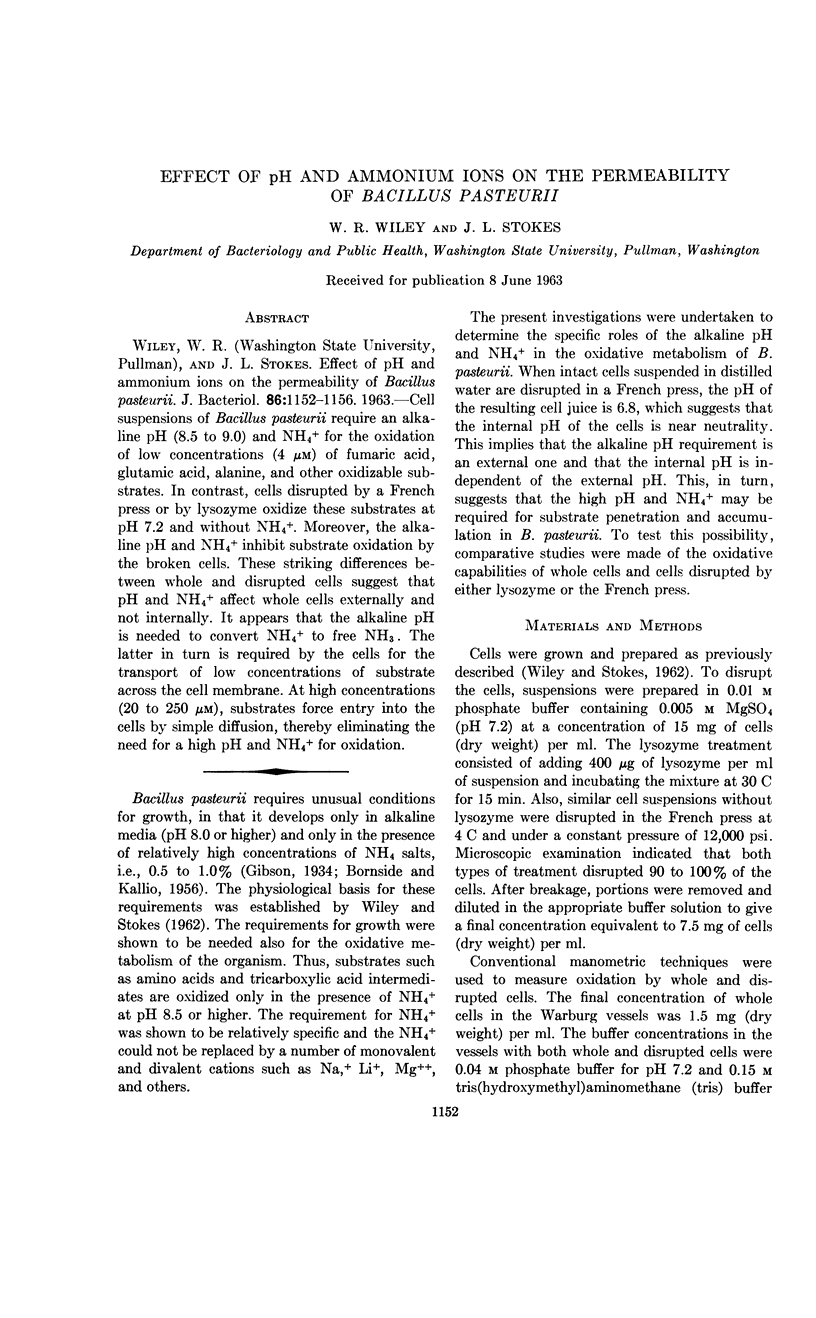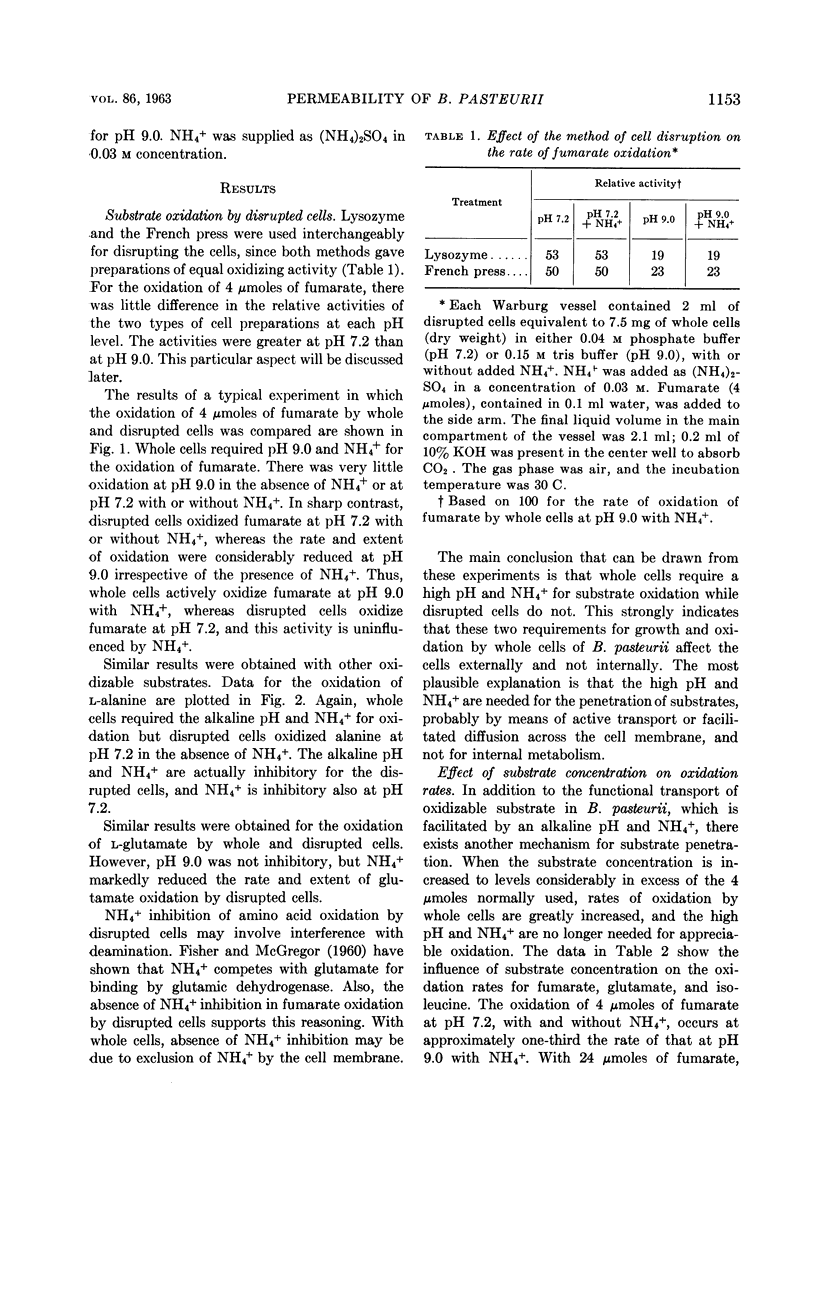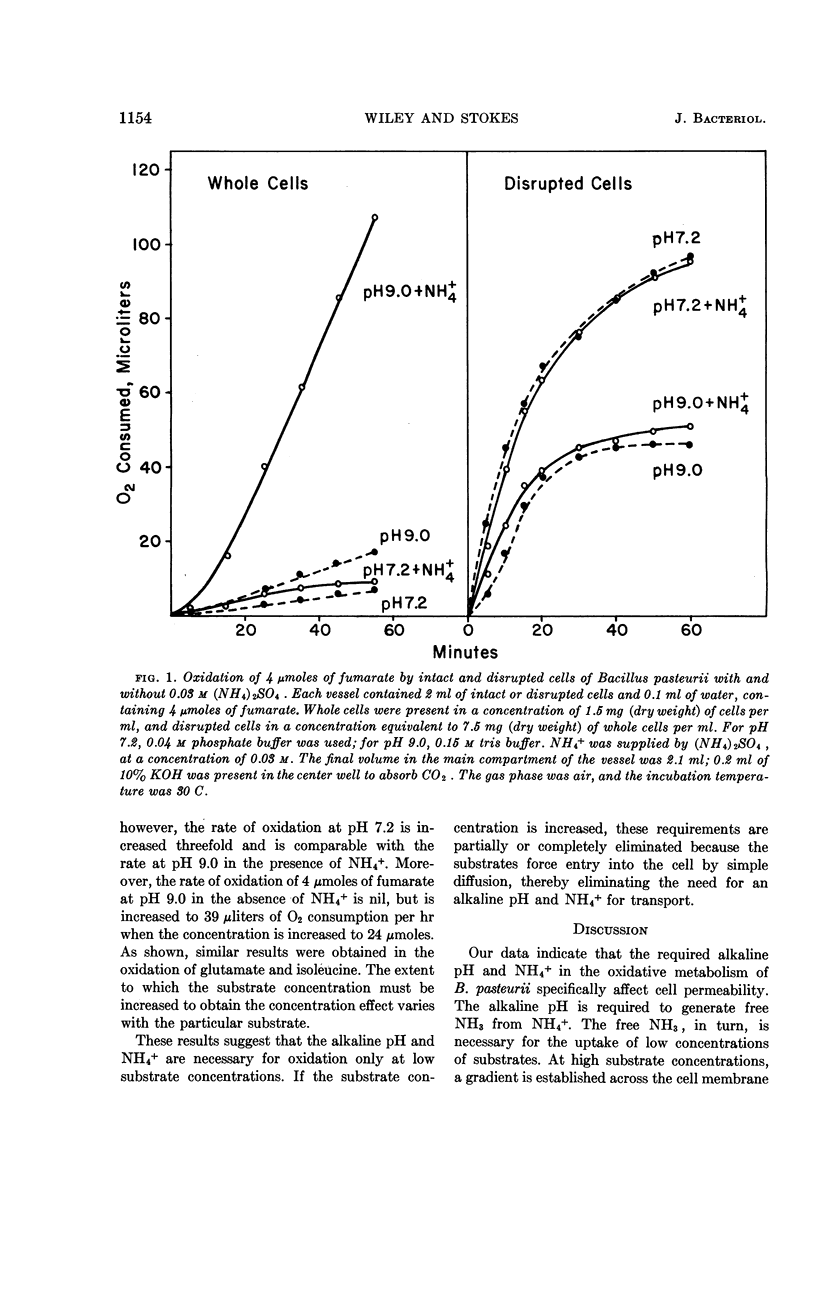Abstract
Wiley, W. R. (Washington State University, Pullman), and J. L. Stokes. Effect of pH and ammonium ions on the permeability of Bacillus pasteurii. J. Bacteriol. 86:1152–1156. 1963.—Cell suspensions of Bacillus pasteurii require an alkaline pH (8.5 to 9.0) and NH4+ for the oxidation of low concentrations (4 μm) of fumaric acid, glutamic acid, alanine, and other oxidizable substrates. In contrast, cells disrupted by a French press or by lysozyme oxidize these substrates at pH 7.2 and without NH4+. Moreover, the alkaline pH and NH4+ inhibit substrate oxidation by the broken cells. These striking differences between whole and disrupted cells suggest that pH and NH4+ affect whole cells externally and not internally. It appears that the alkaline pH is needed to convert NH4+ to free NH3. The latter in turn is required by the cells for the transport of low concentrations of substrate across the cell membrane. At high concentrations (20 to 250 μm), substrates force entry into the cells by simple diffusion, thereby eliminating the need for a high pH and NH4+ for oxidation.
Full text
PDF




Selected References
These references are in PubMed. This may not be the complete list of references from this article.
- BORNSIDE G. H., KALLIO R. E. Urea-hydrolyzing bacilli. II. Nutritional profiles. J Bacteriol. 1956 Jun;71(6):655–660. doi: 10.1128/jb.71.6.655-660.1956. [DOI] [PMC free article] [PubMed] [Google Scholar]
- CRANE R. K. Intestinal absorption of sugars. Physiol Rev. 1960 Oct;40:789–825. doi: 10.1152/physrev.1960.40.4.789. [DOI] [PubMed] [Google Scholar]
- FISHER H. F., McGREGOR L. L. The role of the ammonium moiety in the glutamic dehydrogenase reaction. Biochem Biophys Res Commun. 1960 Dec;3:629–631. doi: 10.1016/0006-291x(60)90075-9. [DOI] [PubMed] [Google Scholar]
- Gibson T. An Investigation of the Bacillus Pasteuri Group: II. Special Physiology of the Organisms. J Bacteriol. 1934 Sep;28(3):313–322. doi: 10.1128/jb.28.3.313-322.1934. [DOI] [PMC free article] [PubMed] [Google Scholar]
- MACLEOD R. A., HORI A. Nutrition and metabolism of marine bacteria. VIII. Tricarboxylic acid cycle enzymes in a marine bacterium and their response to inorganic salts. J Bacteriol. 1960 Oct;80:464–471. doi: 10.1128/jb.80.4.464-471.1960. [DOI] [PMC free article] [PubMed] [Google Scholar]
- PAYNE W. J. Effects of sodium and potassium ions on growth and substrate penetration of a marine pseudomonad. J Bacteriol. 1960 Nov;80:696–700. doi: 10.1128/jb.80.5.696-700.1960. [DOI] [PMC free article] [PubMed] [Google Scholar]
- WILEY W. R., STOKES J. L. Requirement of an alkaline pH and ammonia for substrate oxidation by Bacillus pasteurii. J Bacteriol. 1962 Oct;84:730–734. doi: 10.1128/jb.84.4.730-734.1962. [DOI] [PMC free article] [PubMed] [Google Scholar]


